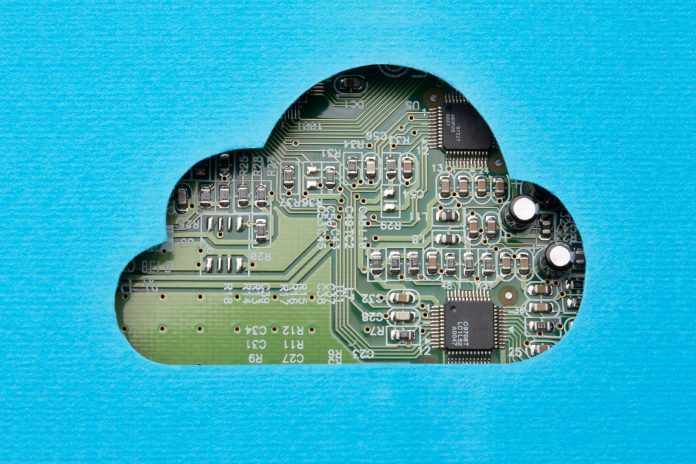Jon Lucas, Co-director of Hyve Managed Hosting, explains why the number of organisations in the public sector adopting a hybrid cloud strategy is growing, analyses what this shift means to these organisations
Although massively spurred by the unprecedented events over the past 12 months, the move to the cloud in the public sector is far from novel. Since 2013, the UK Government has put in place its “Cloud first policy”. Back then, the introduction of the policy aimed to drive wider adoption of cloud computing in the public sector in order to boost business efficiency, whilst furthering cost savings. Fast forward eight years, and what seemed to be merely a cost-saving initiative ended up solving the industry’s biggest issue when lockdown restrictions limited access to offices.
Today, the cloud has been tried and tested, with its benefits highly acknowledged even by those who were once skeptical of its safety and stability. Now, with most COVID-19 restrictions removed in England after “Freedom Day”, it is only natural that business leaders make the decision to move operations back to the office environment. But, in reality, it seems the majority of public service CIOs are beginning to adopt a hybrid model, establishing a combination of on-premise and remote workflows.
In fact, a survey by the FDA union shows that 97% of over two thousand public servants interviewed would like to continue to have the option of working remotely post-pandemic – a “permanent shift” in attitude to working practices, according to the union.
Research by GGF and Dell Technologies has generated similar results, with 82% of UK civil servants saying that they’d like to work remotely more frequently in the future than they did prior to the pandemic.
It’s easy to understand why hybrid working is rapidly growing in popularity. It gives employees the opportunity to enjoy the perks of working remotely whilst still having a physical workplace to use on certain occasions, including important meetings and company events.
Now, it goes without saying that a hybrid team requires hybrid IT solutions. In fact, recent research by NetApp found that 53% of governmental departments, agencies, and public bodies are currently using a hybrid infrastructure (a mix of cloud and on-site solutions). Let’s take a quick look at its main benefits.
Safe remote working
It is clear that hybrid working models are here to stay. However, this “new normal” has – not surprisingly – opened doors for cybercriminals who are taking advantage of remote set-ups and exploiting businesses’ vulnerabilities to steal their data. In consequence, concerns over data protection are growing. The big question is: how can you keep company data safe whilst also ensuring accessibility to employees working remotely?
Having a hybrid cloud solution in place means that public services such as local councils and hospitals can take advantage of the security benefits of a private cloud solution, whilst also enjoying the financial perks of a public cloud solution. This means that they will have dedicated computing resources that only they have access to, resulting in better performance, as data is not shared between other users, tighter security, and easier compliance, as it is built behind a firewall.
Enhanced security
As previously said, hybrid cloud uses a mixture of public cloud, private cloud or on-premise environments in conjunction with each other to enhance efficiencies. When taking advantage of private cloud solutions, businesses have full control over every aspect of the infrastructure, as it is run on dedicated hardware rather than a shared server.
Businesses don’t need to split resources and can be certain their sensitive information isn’t at risk of being exposed. This ownership, also known as single-tenant infrastructure, assures companies that their data is inaccessible to any unauthorised person.
Customised control
Because companies that adopt private clouds are the sole user of the hardware, the private cloud infrastructure can therefore be customised to meet the business needs, not only where performance is concerned but also in terms of process control and authentication. This is particularly relevant for organisations in regulated industries that need to adhere to compliance, governance and security conditions, such as public services.
Better agility and flexibility
Using a combination of IT solutions also allows you to be flexible and make the most of your different storage solutions. For instance, not all data needs to be locked down on a private cloud – only the parts that are more sensitive and therefore require greater security measures. The remaining workloads can be hosted on the public cloud or on-site, freeing up more resources in your private cloud infrastructure.
Improved scalability
Such flexibility consequently results in improved scalability. During traffic spikes, for example, businesses can move certain functionalities from their private cloud or on-premise to the public cloud in order to ensure that they can scale to meet demands – a process known as cloud bursting. Once the increased demand is over, the public cloud in use intelligently scales back to the original servers.
With businesses often having to deal with fluctuating workloads, hybrid cloud ultimately presents a cost-efficient solution. Rather than having to have high resource levels available at all times, businesses can scale on-demand, paying only for the extra resources used.
A careful approach
All being said, the truth is, the integrated use of cloud services is no easy feat. Organisations in the public sector were already struggling to meet rising IT expectations with ageing legacy infrastructure, and the pandemic has only amplified this pressure. If the public sector wants to keep up with ever-changing digital demands, it should consider adopting a hybrid cloud strategy.











